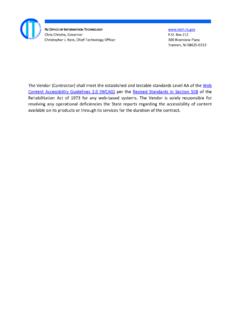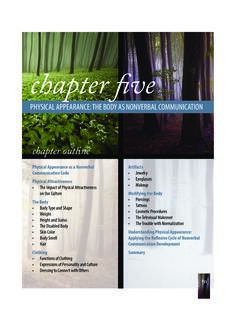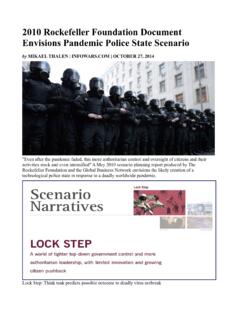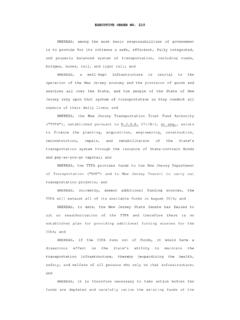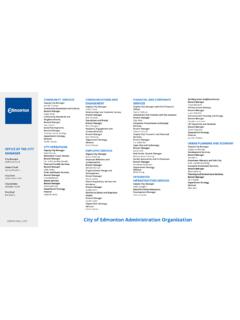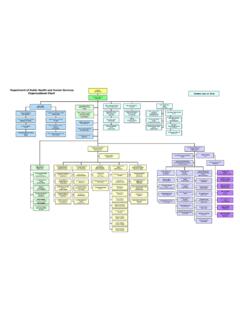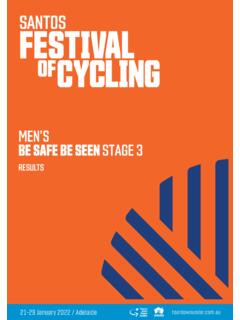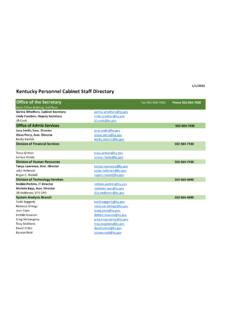Transcription of Character Strengths and Virtues: A Handbook and Classification
1 Character Strengthsand Virtues: A Handbook andClassificationCHRISTOPHER PETERSONMARTIN E. P. SELIGMANOXFORD UNIVERSITY PRESSC haracterStrengthsand VirtuesThe work contained herein is that of the Values in Action Institute,a nonprofit initiative of the Manuel D. and Rhoda Mayerson Foundation,directed by Dr. Neal H. Mayerson. Donald O. CliftonMihalyi CsikszentmihalyiEd DienerRaymond D. FowlerBarbara L. FredricksonHoward GardnerDavid MyersC. Rick SnyderCharles SpielbergerClaude SteeleRobert J. SternbergGeorge VaillantEllen WinnerCharacterStrengthsand VirtuesA Handbook and ClassificationChristopher Peterson & Martin E. P. Seligman120043 OxfordNew YorkAucklandBangkokBuenos AiresCape TownChennaiDar es SalaamDelhiHong KongIstanbulKarachiKolkataKuala LumpurMadridMelbourneMexico CityMumbaiNairobiS o PauloShanghaiTaipeiTokyoTorontoCopyright 2004 by Values in Action InstitutePublished by American Psychological Association750 First Street, NE, Washington, DC University Press, Madison Avenue, New York, New York is a registered trademark of Oxford University PressAll rights reserved.
2 No part of this publication may be reproduced,stored in a retrieval system, or transmitted, in any form or by any means,electronic, mechanical, photocopying, recording, or otherwise,without the prior permission of Oxford University of Congress Cataloging-in-Publication DataPeterson, Christopher, 1950 Feb. 18 Character Strengths and virtues : a Handbook and Classification / Christopher Peterson,Martin E. P. Seligmanp. bibliographical references (p. ).ISBN 0-19-516701-51. Character Handbooks, manuals, Virtues Handbooks, manuals, Seligman,Martin E..P38 '32 dc222003024320987654321 Printed in the United States of Americaon acid-free paperCan we hold hope that positive psychology will be able to help people evolvetoward their highest potential? The Classification described in this bookbegan with this question, posed by Neal Mayerson to Martin Seligman in Mayerson Foundation was concerned that inadequate progress was beingmade from well-worn problem-fixing approaches and that an approach basedon recognizing people s Strengths and aspirations might prove more turned to Seligman to explore the intersection of the emerging fieldof positive youth development and Seligman s new push to articulate a newpositive psychology.
3 It soon became clear that two prior questions needed tobe answered: (1) how can one define the concepts of strength and highestpotential and (2) how can one tell that a positive youth development programhas succeeded in meeting its goals?These two concerns framed the Classification project from its inception. TheManuel D. and Rhoda Mayerson Foundation created the Values in Action (VIA)Institute, a nonprofit organization dedicated to the development of a scientificknowledge base of human Strengths . Seligman was the scientific director of theVIA Institute, and he asked Christopher Peterson to be its project director. InSeptember 2000, Peterson temporarily relocated from the University of Michi-gan to the University of Pennsylvania. For the next three years, Seligman andPeterson, with the assistance of a prestigious array of scholars and practitioners,devised a Classification of Character Strengths and virtues (addressing the good teenager concern) and ways of measuring them (addressing the program evalu-ation concern).
4 This book describes the results of this collaboration. We remaingreatly interested in positive youth development but now believe that the clas-sification and measurement strategies we have created can be applied muchmore have been helped mightily along the way. Our specal gratitude is ofcourse expressed to the Manuel D. and Rhoda Mayerson Foundation for cre-Prefacevi ating the VIA Institute, which supported this work. Thanks in particular aredue to Neal Mayerson for his vision and are also due more generally to the other benefactors and boostersof positive psychology. Don Clifton of the Gallup Organization, along with Mar-tin Seligman, convened a meeting of scholars to begin a delineation of thestrengths. Much of what follows builds on this beginning. The late RobertNozick as well as Mihalyi Csikszentmihalyi, George Vaillant, Daniel Robinson,Kathleen Hall Jamieson, and Ed Diener were the heavyweights at this subsequent meetings were held as well, and we thank those in attendancefor their important contributions to this project.
5 Bonnie Bernard, AlanBlankstein, Robert Blum, Dale Blyth, Jack Burke, Gaye Carlson, Sonia Chessen,Reginald Clark, Joseph Conaty, Katherine Dahlsgaard, Lucy Davidson, Ed Di-ener, Elizabeth Dunn, Thaddeus Ferber, Raymond Fowler, Carissa Griffing,Daniel Hart, Derek Isaacowitz, Terry Kang, Robert Kendall, Nicole Kurzer,Kenneth Maton, Donna Mayerson, Neal Mayerson, Richard McCarty, PeterNathan, Heather Johnston Nicholson, Joyce Phelps, Karen Pittman, Jane Quinn,Gordon Raley, Mark Rosenberg, Peter Schulman, David Seligman, AndrewShatt , Myrna Shure, Susan Spence, Peter Stevens, Philip Stone, ConstanciaWarren, Alan Williams, Steve Wolin, and Nicole Atlantic Philanthropies, the John Marks Templeton Foundation, theAnnenberg/Sunnylands Trust Foundation, and the Department of Educationall funded aspects of this project and by supporting positive psychology gener-ously created an atmosphere in which our Classification project could be seenas a worthy chapters in Section II of this book were drafted by expert socialscientists see the list of contributors (pp.)
6 Xiii xiv) commissioned by us toreview what was known about the various Character Strengths in the classifi-cation. We were fortunate that virtually all of our first choices were able towrite these drafts. In a few cases, we commissioned two separate drafts for agiven Character strength, and these drafts were then melded. All the drafts werethoughtful and thorough, and we think that a fine book would have resultedsimply from gathering them together, even without our editing. However, wetook a further step and rewrote each draft for consistency in organization andtone. Our editing was deliberately heavy-handed, and the contributors shouldnot be held responsible for any resulting were also fortunate to have the advice of distinguished senior social sci-entists see the Board of Advisors (p. ii) while we worked on this project. Inparticular, the wisdom and support of George Vaillant kept us on early chapter drafts were reviewed by youth development experts Bonnie Bernard, Robert Blum, Reginald Clark, Daniel Hart, Heather JohnstonNicholson, and Kenneth Maton in a process coordinated by Nicole Yohalemand Karen Pittman of the International Youth Foundation.
7 Later chapter draftswere reviewed by Donald K. Freedheim, Jerold R. Gold, William C. Howell, viiThomas E. Joiner, Randy J. Larsen, and Lee B. Sechrest, and we thank them fortheir thoughtful want to thank Gary VandenBos of the American Psychological Asso-ciation and Joan Bossert of Oxford University Press both organizations aregreat friends of positive psychology for working together to publish this also want to thank Marion Osmun of the American Psychological Associa-tion for her editorial work and Susan Ecklund for her thorough are grateful to Peter Schulman, Terry Kang, Linda Newsted, ChrisJenkins, and Patty Newbold for their help behind the scenes. Lisa christie andJennifer Yu brought their sharp eyes and good humor to early drafts of themanuscript. Ilona Boniwell, Tiffany Sawyer, Lauren Kachorek, Tracy Steen,Angela Lee Duckworth, Rachel Kellerman, Robert Biswas-Diener, Emily Polak,Adam Cohen, and Derek Isaacowitz helped with some of the research describedhere.
8 Katherine Dahlsgaard identifed the six core virtues wisdom, courage,humanity, justice, temperance, and transcendence used to organize the spe-cific Character Strengths in the Classification . Nansook Park has been a thank Mihalyi Csikszentmihalyi, Ed Diener, Kathleen Hall Jamieson,and George Vaillant for their leadership on the Positive Psychology SteeringCommittee. We are grateful as well to Don Clifton, Jim Clifton, and MarcusBuckingham of the Gallup Organization for pioneering work on Strengths andshowing us that a psychology of human Strengths was we of course want to thank the more than 150,000 individuals whocompleted versions of our measures during the past 3 , but certainly not least, our families and friends deserve special men-tion for embodying the Strengths that constitute the Classification . Virtue maybe its own reward, but we too reaped the page intentionally left blank Contributorsxiii : BACKGROUND1 Introduction to a Manual of the Sanities 32 Universal Virtues?
9 Lessons From History333 Previous Classifications of Character Strengths53 : Strengths OF CHARACTERS trengths ofWISDOM AND KNOWLEDGEI ntroduction934 Creativity [Originality, Ingenuity]1095 Curiosity [Interest, Novelty-Seeking,Openness to Experience]1256 Open-Mindedness [Judgment, Critical Thinking]1437 Love of Learning1618 Perspective [Wisdom]181 ContentsStrengths ofCOURAGEI ntroduction1979 Bravery [Valor]21310 Persistence [Perseverance, Industriousness]22911 Integrity [Authenticity, Honesty]24912 Vitality [Zest, Enthusiasm, Vigor, Energy]273 Strengths ofHUMANITYI ntroduction29113 Love30314 Kindness [Generosity, Nurturance, Care,Compassion, Altruistic Love, Niceness ]32515 Social Intelligence [Emotional Intelligence,Personal Intelligence]337 Strengths ofJUSTICEI ntroduction35516 Citizenship [Social Responsibility, Loyalty, Teamwork]
10 36917 Fairness39118 Leadership413 Strengths ofTEMPERANCEI ntroduction42919 Forgiveness and Mercy44520 Humility and Modesty461x 21 Prudence47722 Self-Regulation [Self-Control]499 Strengths ofTRANSCENDENCEI ntroduction51723 Appreciation of Beauty and Excellence[Awe, Wonder, Elevation]53724 Gratitude55325 Hope [Optimism, Future-Mindedness,Future Orientation]56926 Humor [Playfulness]58327 Spirituality [Religiousness, Faith, Purpose]599 : CONCLUSIONS28 Assessment and Applications625 References645 Index of Names763 Subject Index789 xiThis page intentionally left blank Roy F. Baumeister (Humility and Modesty; Self-Regulation)Marvin W. Berkowitz (Fairness)Jessey H. Bernstein (Vitality)W. Keith Campbell (Humility and Modesty)Katherine Dahlsgaard (Lessons from History)Lucy Davidson (Integrity)Robert A. Emmons (Gratitude)Julie Juola Exline (Humility and Modesty)Constance A.
